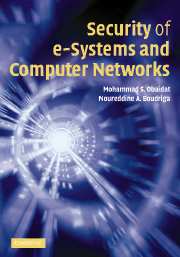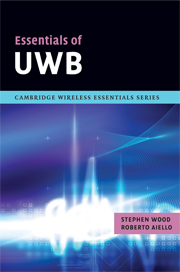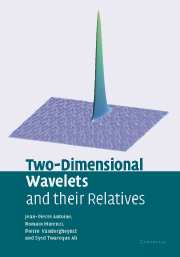Refine search
Actions for selected content:
6778 results in Communications and signal processing
1 - Foundations
-
- Book:
- Hands-On Networking
- Published online:
- 05 June 2012
- Print publication:
- 17 September 2009, pp 1-28
-
- Chapter
- Export citation
9 - Ensemble Decoding Thresholds for LDPC and Turbo Codes
-
- Book:
- Channel Codes
- Published online:
- 05 June 2012
- Print publication:
- 17 September 2009, pp 388-429
-
- Chapter
- Export citation
References
-
- Book:
- Hands-On Networking
- Published online:
- 05 June 2012
- Print publication:
- 17 September 2009, pp 248-252
-
- Chapter
- Export citation
3 - Linear Block Codes
-
- Book:
- Channel Codes
- Published online:
- 05 June 2012
- Print publication:
- 17 September 2009, pp 94-146
-
- Chapter
- Export citation
Contents
-
- Book:
- Hands-On Networking
- Published online:
- 05 June 2012
- Print publication:
- 17 September 2009, pp vii-x
-
- Chapter
- Export citation
8 - Wide area networks and user access
-
- Book:
- Hands-On Networking
- Published online:
- 05 June 2012
- Print publication:
- 17 September 2009, pp 220-247
-
- Chapter
- Export citation
Index
-
- Book:
- Hands-On Networking
- Published online:
- 05 June 2012
- Print publication:
- 17 September 2009, pp 253-259
-
- Chapter
- Export citation
6 - Computer-Based Design of LDPC Codes
-
- Book:
- Channel Codes
- Published online:
- 05 June 2012
- Print publication:
- 17 September 2009, pp 257-297
-
- Chapter
- Export citation
7 - Routing fundamentals and protocols
-
- Book:
- Hands-On Networking
- Published online:
- 05 June 2012
- Print publication:
- 17 September 2009, pp 187-219
-
- Chapter
- Export citation
14 - Nonbinary LDPC Codes
-
- Book:
- Channel Codes
- Published online:
- 05 June 2012
- Print publication:
- 17 September 2009, pp 592-635
-
- Chapter
- Export citation
2 - Finite Fields, Vector Spaces, Finite Geometries, and Graphs
-
- Book:
- Channel Codes
- Published online:
- 05 June 2012
- Print publication:
- 17 September 2009, pp 28-93
-
- Chapter
- Export citation
12 - LDPC Codes Based on Combinatorial Designs, Graphs, and Superposition
-
- Book:
- Channel Codes
- Published online:
- 05 June 2012
- Print publication:
- 17 September 2009, pp 523-560
-
- Chapter
- Export citation
Preface
-
- Book:
- Hands-On Networking
- Published online:
- 05 June 2012
- Print publication:
- 17 September 2009, pp xi-xii
-
- Chapter
- Export citation
Frontmatter
-
- Book:
- Hands-On Networking
- Published online:
- 05 June 2012
- Print publication:
- 17 September 2009, pp i-vi
-
- Chapter
- Export citation
Preface
-
- Book:
- Channel Codes
- Published online:
- 05 June 2012
- Print publication:
- 17 September 2009, pp xv-xviii
-
- Chapter
- Export citation
11 - Constructions of LDPC Codes Based on Finite Fields
-
- Book:
- Channel Codes
- Published online:
- 05 June 2012
- Print publication:
- 17 September 2009, pp 484-522
-
- Chapter
- Export citation
8 - Ensemble Enumerators for Turbo and LDPC Codes
-
- Book:
- Channel Codes
- Published online:
- 05 June 2012
- Print publication:
- 17 September 2009, pp 339-387
-
- Chapter
- Export citation

Security of e-Systems and Computer Networks
-
- Published online:
- 11 September 2009
- Print publication:
- 14 June 2007

Essentials of UWB
-
- Published online:
- 22 August 2009
- Print publication:
- 26 June 2008

Two-Dimensional Wavelets and their Relatives
-
- Published online:
- 19 August 2009
- Print publication:
- 23 September 2004
